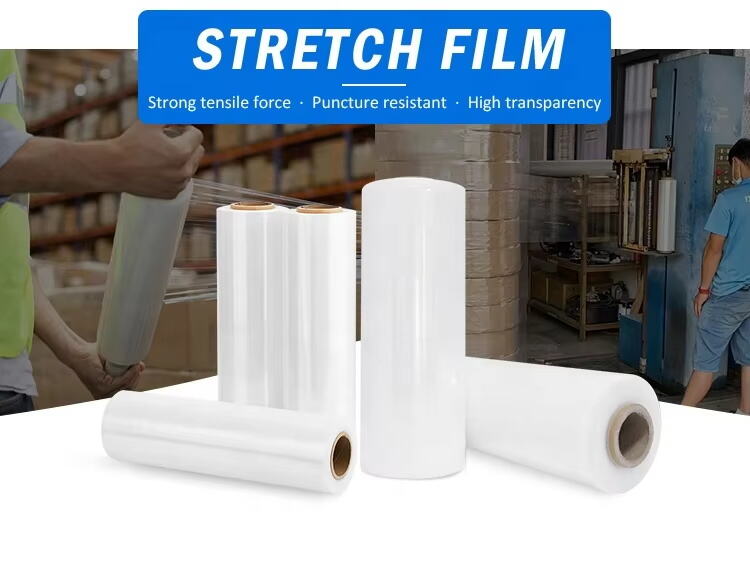Verpakking van voedingsmiddelen en dranken domineert het gebruik van kunststof folie
Verlenging van de houdbaarheid via barrièrefolies
Barrièrefilms zijn cruciaal om de houdbaarheid van voedingsmiddelen te verlengen door de overdracht van zuurstof en vocht te minimaliseren. Deze technologie is met name belangrijk bij de verpakking van bederfelijke producten zoals zuivel en vlees, waarbij het behouden van versheid een primaire zorg is. Door de blootstelling aan omgevingsinvloeden te verminderen, helpen barrièrefilms om bederf en kwaliteitsverlies te voorkomen. Studies hebben aangetoond dat het gebruik van geavanceerde barrièrtechnologieën, zoals EVOH (ethyleenvinylalcohol), de levensduur van producten aanzienlijk kan verlengen, met sommige rapporten die een verlenging van tot 40% in de houdbaarheid melden. Het gebruik van barrièrefilms in voedselverpakkingen is een cruciale factor bij het behouden van de voedingskwaliteit en veiligheid van voedsel, terwijl de opslagtijden worden geoptimaliseerd.
Lichte flexibele verpakkingsoplossingen
Lichtgewicht verpakkingsoplossingen bieden aanzienlijke voordelen, waaronder lagere verzendkosten en een verminderde milieubelasting. De groeimarkt voor flexibele verpakkingen kent indrukwekkende groei door de cruciale rol die deze verpakkingen spelen in voedselveiligheid en gemak. Statistieken tonen een samengestelde jaarlijkse groeisnelheid van bijna 5% voor deze markt, wat haar belang onderstreept binnen moderne verpakkingsstrategieën. Innovatieve materialen zoals bioplastics en meervlaagsfolies dragen bij aan deze trend, waarbij duurzaamheid behouden blijft zonder het gewicht. Deze materialen bevorderen duurzame praktijken doordat ze de koolstofvoetafdruk van transportmiddelen verlagen, wat de toewijding van de industrie aan milieuvriendelijke operaties weerspiegelt. Het overstappen op lichte, flexibele verpakkingen draagt niet alleen bij aan milieudoelstellingen, maar garandeert ook de veilige levering van voedingsmiddelen aan consumenten.
Landbouwsector is afhankelijk van speciale plastic folies
Mattenfolies voor verbetering van gewasopbrengsten
Mulchfolies zijn onmisbaar geworden in de landbouw, omdat ze de regulering van de bodemtemperatuur en het behoud van vocht verbeteren, wat essentieel is voor het verhogen van de gewasopbrengst. Deze folies creëren een beter geregeld milieu, waardoor waterverdamping wordt verminderd en de ideale bodemomstandigheden worden behouden. Onderzoek uit landbouwstudies wijst op significante opbrengsttoenames – soms tot wel 25% – die kunnen worden toegeschreven aan het gebruik van mulchfolies. Landbouwers gebruiken vaak zwarte, zilverkleurige en biologisch afbreekbare mulchfolies, elk met unieke eigenschappen die geschikt zijn voor verschillende landbouwbehoeften. Zwarte mulchfolies zijn effectief in het bestrijden van onkruid, zilverkleurige folies reflecteren zonlicht om lagere bodemtemperaturen te behouden, en biologisch afbreekbare varianten sluiten aan op duurzame praktijken, omdat hun gebruik de afvalproblemen elimineert die gepaard gaan met traditionele plastics.
Glasdeksels en Bescherming van Voedermaïs
Plastic folies spelen een cruciale rol in serreomgevingen door de zonlichtinname te maximaliseren terwijl warmteverlies wordt geminimaliseerd, waardoor een optimale omgeving voor plantengroei ontstaat. Dit is met name belangrijk voor energie-efficiëntie en het in stand houden van stabiele temperaturen gedurende verschillende seizoenen. UV-gestabiliseerde folies zijn vooral voordelig voor de bescherming van kuilvoer, aangezien ze een optimale fermentatie mogelijk maken door bederf en voedingsverliezen te voorkomen. Dergelijke folies helpen een consistente omgeving in stand te houden, wat cruciaal is voor productie-efficiëntie in serres. Bewijs toont aan dat het gebruik van UV-gestabiliseerde folies de algehele productie-efficiëntie in serres kan verhogen met tot 15%, waardoor ze een waardevolle investering worden voor moderne landbouwpraktijken. Door de gewaskwaliteit te behouden en de opbrengst te verhogen, tonen deze speciale folies hun essentiële rol aan binnen landbouwstrategieën.
Toepassingen van kunststof folies in de bouwsector
Dampwerende lagen in gebouwfunderingen
Dampremmen spelen een cruciale rol bij het voorkomen van vochtophoping in gebouwfunderingen en waarborgen zo de structuurintegriteit en levensduur. Deze remmen zijn essentieel binnen bouwnormen, omdat ze voorkomen dat waterdamp in vloeren en muren treedt, wat kan leiden tot schimmelvorming, rotting en materiaalverval. Normen zoals ASTM E1745 geven de eisen aan voor dampremmende materialen. Het is belangrijk om onderscheid te maken tussen ondoordringbare dampremmen, die vocht volledig blokkeren, en doorlatende remmen, die enige vochtbeweging toelaten om condensatieproblemen te voorkomen. Elk type heeft zijn specifieke toepassingen, afhankelijk van de omstandigheden en bouwvereisten.
Beschermfolies voor oppervlakbehoud
Beschermfolies zijn onmisbaar bij het in stand houden van de kwaliteit van oppervlakken tijdens constructie en renovatie. Door een tijdelijke barrière te bieden, beschermen zij oppervlakken zoals vloeren, glaspanelen en kasten tegen krassen, stof en toevallige verfspatten. Afhankelijk van het type bouwmateriaal kunnen deze folies worden afgestemd op specifieke beschermingsbehoeften. Het gebruik van beschermfolies biedt aanzienlijke economische voordelen door schade te verminderen en daardoor reparatiekosten te besparen, waardoor ze een kostenefficiënte oplossing zijn, met name bij grote projecten waarin het behouden van esthetiek en functionaliteit van groot belang is.
Steriele verpakking voor medische hulpmiddelen
Plastic folies spelen een cruciale rol bij het waarborgen van de steriliteit van medische apparatuur en uitrusting. Deze films fungeren als beschermende barrières die de steriliteit behouden vanaf de productie tot aan het gebruik, waardoor gegarandeerd wordt dat medische apparaten veilig zijn voor gebruik. Regulerende normen, zoals die van de International Organization for Standardization (ISO), bepalen welke materialen gebruikt mogen worden voor verpakkingen binnen de gezondheidszorg om naleving en veiligheid te waarborgen. Innovaties op het gebied van steriele verpakkingen hebben aanzienlijke marktgroei doorgemaakt, waarbij voorspellingen een samengestelde jaarlijkse groeisnelheid (CAGR) van 4,47% voorspellen tussen 2025 en 2030. Deze groei wordt grotendeels gedreven door de noodzaak binnen de gezondheidszorgsector voor betrouwbare en veilige verpakkingsmaterialen, in lijn met de toenemende eisen voor steriele praktijken in medische omgevingen.
Farmaceutische blisters
In de verpakking van geneesmiddelen zijn blisters essentieel voor het beschermen van medicijnen tegen milieufactoren en het bieden van veilige verpakkingen. Deze verpakkingen waarborgen de integriteit en veiligheid van geneesmiddelen en beschermen ze tegen vocht, besmetting en fysieke schade. Onderzoek wijst uit dat blisterverpakkingen de nalevingsgraad van medicatie met tot 30% kunnen verbeteren, omdat ze de dosering vereenvoudigen. Algemene materialen die worden gebruikt in blisters zijn PVC en aluminiumfolie, die een langere houdbaarheid en optimale bescherming bieden voor gevoelige medicijnen. Deze materialen dragen bij aan het behouden van de kwaliteit en werkzaamheid van geneesmiddelen in de tijd, wat cruciaal is voor zowel apothekers als consumenten.

Toepassingen in de auto-industrie
Fabricage van interieuronderdelen
Het gebruik van kunststof folies in de fabricage van auto-interieurs is cruciaal voor het behalen van gewichtsreductie en het verhogen van de esthetische uitstraling. Deze folies zijn essentiële onderdelen van bijvoorbeeld dashboardbekleding en bekleding in het algemeen, waardoor fabrikanten strakke en aantrekkelijke ontwerpen kunnen creëren zonder concessies te doen aan duurzaamheid. Folies zoals polyvinylchloride (PVC) en thermoplastisch polyolefine (TPO) worden vaak gebruikt vanwege hun uitstekende afwerkkwaliteit. Vooruitgang in materiaaltechnologie heeft de duurzaamheid en afwerkkwaliteit van deze folies aanzienlijk verbeterd, zodat ze bestand zijn tegen dagelijks slijtage. Deze innovaties dragen niet alleen bij aan het algehele lichtgewicht van de voertuigen, maar verhogen ook de visuele uitstraling van het interieur, waarbij hoge kwaliteits- en ontwerpnormen worden gehandhaafd.
Tijdelijke Beschermfolies voor Voertuigen
Tijdelijke beschermfolies spelen een cruciale rol bij het beschermen van voertuigoppervlakken tijdens de productie en transport. Deze folies vormen een onmisbare barrière tegen krassen en deuken, waardoor het voertuig behoudt zijn afwerking totdat het bij de eindgebruiker aankomt. Gebruiksstatistieken tonen een significante daling van schadeprocessen wanneer dergelijke beschermfolies effectief worden toegepast, wat hun belang in kwaliteitsborgingsprocessen benadrukt. Veelgebruikte folies zijn onder andere lakbeschermfolie (PPF) voor geverfd oppervlak, en specifieke typen voor glas en metalen, zoals polyethyleen (PE)-folies. Deze folies bieden verschillende graden van bescherming afhankelijk van het oppervlakmateriaal, waardoor gedurende het gehele automobielproductieproces adequaat onderhoud wordt geboden.
Milieu-overwegingen bij het gebruik van plastic folies
Recycle-uitdagingen en innovaties
Het recyclen van traditionele kunststof folies levert significante uitdagingen op vanwege hun complexe chemische structuur en besmetting tijdens het gebruik. Toch veranderen vooruitgangen in recyclingtechnologieën deze belemmeringen in kansen voor duurzame praktijken. Recente studies benadrukken de voortgang die is geboekt met chemische recycling, waarmee complexe kunststoffen kunnen worden afgebroken tot herbruikbare monomeren. Bijvoorbeeld, geavanceerde depolymerisatietechnieken hebben potentie getoond bij het omzetten van polyolefineafval naar monomeren van hoge zuiverheid, geschikt voor het opnieuw vervaardigen van producten. Succesvolle recyclingprogramma's binnen industrieën, zoals in bulkchemicaliën, tonen aan dat systematische aanpakken en technologische innovatie de milieueffecten van kunststof folie-recycling kunnen verbeteren. Door meer gerecyclede materialen te integreren, kunnen dergelijke verbeteringen aanzienlijk bijdragen aan het verminderen van de koolstofvoetafdruk die gepaard gaat met de productie van kunststof folies.
Trends in de ontwikkeling van biologisch afbreekbare folies
Er is een groeiende interesse in biologisch afbreekbare plastic folies, voornamelijk gedreven door milieuconsciëntie en de vraag naar duurzame alternatieven. Biologisch afbreekbare folies vormen een levensvatbare optie vanwege hun vermogen om op natuurlijke wijze af te breken, waardoor de vervuiling die gepaard gaat met traditionele plastics wordt verminderd. De markt voor biologisch afbreekbare plastic folies zal tussen 2025 en 2030 naar verwachting groeien met een CAGR van 4,47%, wat wijst op een sterke marktverschuiving naar milieuvriendelijke verpakkingen. Materialen zoals polylactische zuur (PLA) en cellulose krijgen meer aandacht vanwege hun composteerbaarheid en gemak waarmee ze in verschillende toepassingen kunnen worden geïntegreerd. Deze materialen hebben eigenschappen zoals vochtwerendheid en mechanische stabiliteit, waardoor ze geschikt zijn voor de productie van biologisch afbreekbare folies. Naarmate innovatieve ontwerpen de functionaliteit van deze materialen blijven verbeteren, worden biologisch afbreekbare alternatieven steeds vaker gebruikt in verschillende industrieën, wat een verschuiving naar duurzaamheid zonder inbreuk op praktische toepasbaarheid weerspiegelt.
Veelgestelde vragen over het gebruik van kunststof folie in verschillende industrieën
Wat zijn de voordelen van barrièrefolie bij verpakkingen voor levensmiddelen?
Barrièrefoliën voor levensmiddelenverpakkingen helpen de houdbaarheid te verlengen door zuurstof- en vochtoverdracht te beperken, bederf te voorkomen en de versheid van producten te behouden.
Hoe dragen kunststof folies bij aan milieuduurzaamheid in de bouwsector?
Kunststof folies zoals dampremmen voorkomen vochtophoping, waarborgen de structurale integriteit en verminderen het risico op veroudering, terwijl hun recyclage helpt om ecologische effecten te beperken.
Welke innovaties worden er gedaan op het gebied van biologisch afbreekbare kunststof folies?
Recente innovaties op het gebied van biologisch afbreekbare folies omvatten het gebruik van materialen zoals polylactische zuur (PLA) en cellulose, die composteerbaar zijn en goed integreren in diverse milieuvriendelijke toepassingen.
Hoe zorgen kunststof folies ervoor dat medische apparatuur steril blijft?
Kunststof folies bieden beschermende barrières die steriliteit behouden vanaf de productie tot de toepassing, en voldoen aan regelgevende normen om de veiligheid van medische hulpmiddelen te garanderen.
Waarom neemt het gebruik van kunststof folies toe in de automobielsector?
Kunststof folies worden steeds vaker gebruikt in de auto-industrie voor gewichtsreductie, esthetische uitstraling en oppervlaktebescherming, waardoor de algehele materiaalduurzaamheid en designverbetering worden bevorderd.
Table of Contents
- Verpakking van voedingsmiddelen en dranken domineert het gebruik van kunststof folie
- Landbouwsector is afhankelijk van speciale plastic folies
- Toepassingen van kunststof folies in de bouwsector
- Steriele verpakking voor medische hulpmiddelen
- Toepassingen in de auto-industrie
- Milieu-overwegingen bij het gebruik van plastic folies
-
Veelgestelde vragen over het gebruik van kunststof folie in verschillende industrieën
- Wat zijn de voordelen van barrièrefolie bij verpakkingen voor levensmiddelen?
- Hoe dragen kunststof folies bij aan milieuduurzaamheid in de bouwsector?
- Welke innovaties worden er gedaan op het gebied van biologisch afbreekbare kunststof folies?
- Hoe zorgen kunststof folies ervoor dat medische apparatuur steril blijft?
- Waarom neemt het gebruik van kunststof folies toe in de automobielsector?


